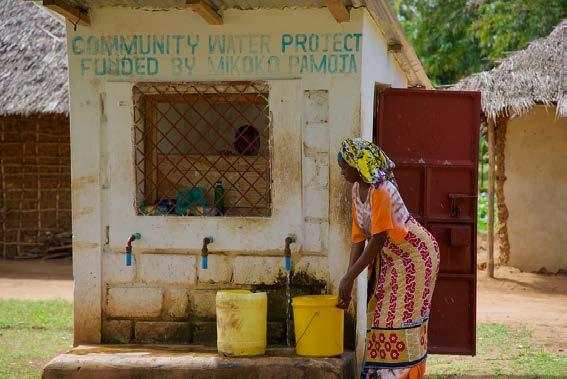
3 minute read
Smart Technology Aids Research Into A Nationally Important Seabird Colony
UK scientists are rolling out an array of technology to understand if a charismatic seabird species will thrive or suffer under future climate change and extreme weather events.
The research, led by scientists from Bangor University, focuses on a national important colony of European shag (Gulosus aristotelis) on Puffin Island, near Anglesey. Numbers of European shags have been declining in recent years, putting them onto the red list of birds under the highest threat of extinction in the UK.
GPS trackers, accelerometers, miniature bird-borne cameras and time-lapse photography are some of the technologies being used by the team, which includes researchers from Lancaster University and the Universities of Liverpool and Cumbria. The footage from the miniaturised cameras captures the birds diving for fish, providing data to help researchers understand how weather conditions may affect the foraging behaviour and success of a diving seabird species. The research is the first time this technology has been used on seabirds on Puffin Island.
The accelerometers – a kind of speedometer – record how fast the bird is moving and how it twists and turns in the sea in pursuit of prey.
Ocean Sciences PhD student Claire Carrington, presented the research at the International Seabird Group Conference in Cork. Commenting she said: “We piloted the technologies on European shags on Puffin Island this year and they worked really well, so we’re aiming to fit them to more birds next year. We’ve chosen to work with the European shags, as they are particularly vulnerable to the impacts of extreme weather and remain in coastal areas year-round. The data we’re collecting will give us insights for both shags and similar diving birds such as the Great cormorant.”
They hope that the data will help them to understand how the European shag and Great cormorant, will respond to different weather conditions and predict whether they will be resilient enough to cope with the more extreme weather brought on by climate change.
Time-lapse cameras which take photos every 30 minutes are also installed all year round at key roosting sites around the North Wales coast, where the shags and cormorants dry their feathers off after fishing. Neither bird has totally waterproof plumage. This helps them to dive, by reducing their buoyancy, but means that they have to dry their wings after diving. The researchers are collaborating with computer scientists from Bangor University to develop bespoke software to automate the counting of seabirds, in thousands of images.
Lead researcher Dr James Waggitt said: “Cormorants and shags are very recognisable, and many people will have seen them around the coast, drying their wings out on the rocks. But although they are a common sight, their populations are still at risk in the UK, which is why it’s so important to better understand the threats they face and how they are responding.”
During the breeding season, other time-lapse cameras, taking pictures every ten minutes, have also been installed at nests on Puffin Island to see how regularly the birds are returning to feed their chicks.
Protecting and Regenerating Tropical Mangroves
Dr Martin Skov is involved in carbon offsetting
work in Kenya.
This work builds on a long-term partnership between Dr James Kairo of the Kenyan Marine and Fisheries Research Institute (KMFRI), Prof Mark Huxham of Edinburgh Napier University, Dr Martin Skov of Bangor University, and other colleagues. The partnership set up the world’s first carbon-trading projects arising from the protection of a marine system. The Mikoko Pamoja (meaning Mangroves Together in Swahili) community project in southern Kenya was accredited in 2013 and has won multiple awards. A second project, Vanga Blue Forests, has since been created and more are under way. The team set up the ACES charity to manage the trading of carbon credits arising from the protection of mangroves and to promote conservation projects with coastal ecosystems in Africa. For more information, see the ACES website.
Mangroves occur worldwide in the tropics, especially within 5 degrees as the equator, known as blue carbon ecosystems, they are home to saltwater marshes, seagrass prairies, and marine forests. Mangroves are vital to climate change. They cover only 0.1% of the earth’s surface but capture and store almost 5 times more carbon than rain forests. When trees on land due they release carbon into the atmosphere, with mangroves however, carbon is trapped in the roots and mud where it can stay, under water for thousands of years.
Mangroves were once seen as inhospitable malarial swamps and were among the fastest disappearing habitats in the world. Now thanks to investment and projects such as Mikoko Pamoja organisations are paying for the Planting and conservation of mangroves, in order to offset their carbon. This doesn’t only help the mangroves; it helps local communities thrive and is an example of the world-changing work done at Bangor University.
‘Water Point’ This photo exemplifies a community benefit from the Mikoko Pamoja project: public water points installed in the village. Women and children used to have to walk a long distance for water, and then the original well system collapsed. There was no water at the School in Gazi. The project has helped with that as well. photo credit: Vanga Blue Forests Project, GRID-Arendal.











